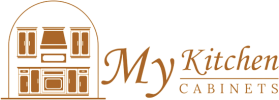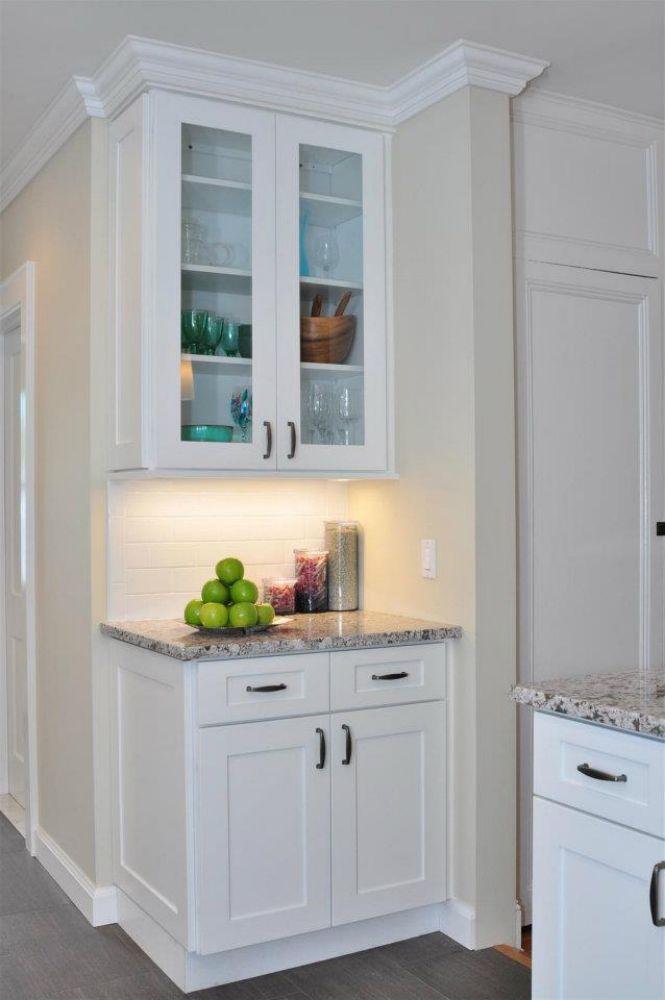Ensuring Quality and Safety: The Essential Certifications to Look for When Buying Kitchen Cabinets
When it comes to upgrading your home, investing in new kitchen cabinets is one of the smartest and most impactful decisions you can make. Cabinets don’t just define the look of your kitchen — they also influence its functionality, indoor air quality, and even your family’s health. Many homeowners focus solely on style, color, and price when shopping for cabinets, but safety and environmental standards are just as crucial.
Choosing certified, safe kitchen cabinets ensures that your cabinetry meets strict industry standards for material quality, sustainability, and low-emission manufacturing. These certifications protect you from harmful chemicals, poor craftsmanship, and products that might not withstand years of daily use.
At kitchen cabinets by My Kitchen Cabinets, every product is designed and manufactured with safety, durability, and environmental responsibility in mind. Our cabinetry options comply with top industry certifications to guarantee that your kitchen remains not only beautiful but also safe for your home and family.
Why Certifications Matter When Buying Kitchen Cabinets
Cabinets are made from various materials — including plywood, MDF, particleboard, paints, and adhesives — all of which can release volatile organic compounds (VOCs) or formaldehyde if not properly regulated. Without certified safety standards, homeowners risk exposure to these harmful chemicals.
Key Reasons to Choose Certified Cabinets:
-
Health and Safety: Certifications ensure materials emit minimal or no harmful substances.
-
Environmental Sustainability: Certified products support eco-friendly sourcing and production.
-
Quality Assurance: Verified durability and craftsmanship guarantee long-term performance.
-
Consumer Protection: Certifications provide accountability and transparency from manufacturers.
By prioritizing certified cabinets, you invest in safer indoor air, sustainable practices, and furniture built to last.
Understanding Safety and Quality Certifications for Kitchen Cabinets
Navigating the world of certifications can feel overwhelming, but understanding what each label means makes it easier to choose the right cabinetry. Below are the most important certifications to look for when buying safe and high-quality kitchen cabinets.
KCMA Certification: Kitchen Cabinet Manufacturers Association
One of the most trusted certifications in the cabinet industry is the KCMA (Kitchen Cabinet Manufacturers Association) seal. Cabinets that carry this certification have passed rigorous tests that assess structural integrity, finish durability, and overall craftsmanship.
What the KCMA Certification Guarantees:
-
Structural Strength: Cabinets are tested for shelf sagging, drawer strength, and joint durability.
-
Finish Quality: Surface coatings are exposed to heat, humidity, and detergents to ensure resistance to everyday kitchen conditions.
-
Functionality: Doors and drawers must withstand thousands of open-and-close cycles without losing alignment.
-
Compliance with U.S. Standards: All certified products meet or exceed the American National Standards Institute (ANSI) requirements.
Why It Matters:
KCMA certification assures homeowners that the cabinets are durable, well-built, and manufactured by a credible company. It’s the gold standard for verifying long-term quality and construction excellence in the kitchen cabinet industry.
CARB2 Compliance: Formaldehyde Emission Safety
Another critical certification for cabinet safety is CARB2 compliance, established by the California Air Resources Board. This certification sets strict limits on formaldehyde emissions from composite wood products like plywood, MDF, and particleboard.
What CARB2 Certification Means:
-
Low Formaldehyde Emissions: Cabinets emit minimal volatile organic compounds (VOCs) that could harm indoor air quality.
-
Safe for Homes and Families: Protects against respiratory irritation, allergies, and long-term health effects.
-
Compliance with EPA TSCA Title VI: Ensures federal adherence to formaldehyde safety standards across all states.
Why It Matters:
CARB2-compliant cabinets are safer for your family’s health and ideal for eco-conscious homeowners. Many reputable brands, including My Kitchen Cabinets, manufacture all products using CARB2-compliant materials to promote a cleaner, healthier kitchen environment.
EPA TSCA Title VI Compliance
The EPA’s Toxic Substances Control Act (TSCA) Title VI standard is the federal counterpart to California’s CARB2 regulation. It ensures that all composite wood materials sold or manufactured in the United States meet low formaldehyde emission limits.
What This Certification Includes:
-
National Regulation: Applies to particleboard, MDF, and hardwood plywood.
-
Testing and Labeling Requirements: Each panel must be tested and labeled to verify compliance.
-
Traceability: Manufacturers are required to maintain certification records and compliance documentation.
Why It Matters:
When buying cabinets, always verify that they are labeled TSCA Title VI compliant. This ensures you’re purchasing a product legally approved for sale in the U.S., free from unsafe chemical emissions.
Greenguard and Greenguard Gold Certification
Greenguard Certification is another vital indicator of safe indoor air quality. It focuses on ensuring that building materials and furniture — including kitchen cabinets — release minimal pollutants into indoor environments.
What Greenguard Certification Tests For:
-
Low Chemical Emissions: Evaluates over 10,000 different chemicals and VOCs.
-
Indoor Air Quality: Guarantees products contribute to healthier indoor environments.
-
Greenguard Gold (Advanced Level): Stricter limits designed for schools, hospitals, and homes with children or sensitive individuals.
Why It Matters:
Greenguard Gold-certified cabinets are ideal for families, especially those with children, elderly members, or people with allergies. They provide peace of mind by ensuring the air in your kitchen remains fresh and toxin-free.
FSC Certification: Forest Stewardship Council
Sustainability is becoming a priority for modern homeowners, and FSC (Forest Stewardship Council) certification verifies that the wood used in your cabinets comes from responsibly managed forests.
What FSC Certification Stands For:
-
Responsible Forest Management: Ensures no illegal logging or deforestation.
-
Protection of Biodiversity: Supports the preservation of wildlife and natural habitats.
-
Ethical Labor Practices: Promotes fair treatment of workers in the supply chain.
-
Traceable Chain of Custody: Every piece of certified wood is tracked from forest to final product.
Why It Matters:
Choosing FSC-certified cabinets helps reduce your carbon footprint while supporting ethical and sustainable forest management worldwide. It’s a key choice for eco-conscious homeowners.
LEED Certification Contribution
While LEED (Leadership in Energy and Environmental Design) certification applies to buildings rather than individual products, buying LEED-compliant or contributing materials — like eco-certified cabinets — helps your home earn LEED points.
How Kitchen Cabinets Contribute to LEED Certification:
-
Sustainable Materials: Using recycled or FSC-certified wood earns sustainability points.
-
Low VOC Emissions: Greenguard and CARB2 compliance contribute to indoor environmental quality credits.
-
Energy Efficiency: Manufacturers using renewable energy in production may also support LEED criteria.
Why It Matters:
If you’re designing a green or energy-efficient home, choosing LEED-contributing cabinetry helps you meet environmental goals while maintaining a modern aesthetic.
NAHB Green Certified Products
The National Association of Home Builders (NAHB) offers its National Green Building Standard (NGBS) certification to products that meet energy efficiency, sustainability, and low-emission benchmarks.
What NAHB Certification Ensures:
-
Environmentally Friendly Production: Cabinets are made with minimal environmental impact.
-
Durability and Longevity: Reduces waste by ensuring long-lasting quality.
-
Low-VOC Finishes: Protects air quality and home safety.
Why It Matters:
Cabinets meeting NGBS or NAHB Green standards contribute to healthier homes while minimizing your environmental footprint.
NSF Certification: Sanitation and Food Safety
Though less common, NSF (National Sanitation Foundation) certification ensures materials used in cabinetry are safe for environments that require cleanliness — such as commercial kitchens or food preparation areas.
What NSF Certification Means:
-
Non-Toxic Materials: Cabinet finishes and adhesives are food-safe and meet strict sanitation standards.
-
Moisture Resistance: Ensures that materials can withstand cleaning chemicals and water exposure.
-
Hygienic Surfaces: Prevents bacteria buildup and surface contamination.
Why It Matters:
If you want peace of mind about food safety and hygiene, look for NSF-certified finishes, especially for cabinets located near cooking and cleaning zones.
Indoor Air Quality (IAQ) Certifications and Labels
Poor indoor air quality can cause long-term health problems, especially in enclosed kitchen spaces. IAQ labels confirm that your kitchen cabinets emit safe levels of chemicals and VOCs.
Trusted IAQ Certifications:
-
Scientific Certification Systems (SCS) Global Services: Tests for formaldehyde, VOCs, and other pollutants.
-
BIFMA Level: For office and commercial cabinetry, ensuring eco-friendly and low-emission manufacturing.
-
Green Seal: Indicates environmentally responsible production practices.
Why It Matters:
These certifications protect your family from indoor air pollution, ensuring that your kitchen remains a healthy space for cooking and gathering.
Water-Based Finishes and Low-VOC Coatings
While not official “certifications,” selecting cabinets with water-based finishes and low-VOC coatings complements certified products. These finishes eliminate the need for toxic solvents, ensuring safer air quality.
Benefits Include:
-
No Harsh Odors: Water-based finishes emit significantly fewer fumes.
-
Environmentally Responsible: Lower carbon emissions during production.
-
Durability: New water-based coatings are just as strong as solvent-based alternatives.
Pairing certified materials with low-VOC finishes provides the ultimate peace of mind for eco-conscious homeowners.
Third-Party Verification: Why Independent Testing Matters
Certifications are only valuable when backed by independent, third-party testing. Reputable certifying bodies conduct objective evaluations rather than relying on manufacturer claims.
What to Look For in Testing:
-
Accredited Laboratories: Verified by ANSI or ISO standards.
-
Transparent Reporting: Results and standards should be publicly accessible.
-
Periodic Audits: Manufacturers are re-evaluated regularly to maintain certification.
Choosing products with verified, third-party certifications ensures authenticity and protects you from misleading or “greenwashed” marketing claims.
How My Kitchen Cabinets Upholds These Safety Standards
At My Kitchen Cabinets, safety and sustainability are integral to every product we craft. Our manufacturing process incorporates the highest industry certifications — including KCMA, CARB2, FSC, and Greenguard Gold — to ensure that your cabinetry is as safe as it is beautiful.
Our Commitment to You:
-
Health-Conscious Manufacturing: Only CARB2 and EPA-compliant materials are used.
-
Eco-Friendly Sourcing: FSC-certified wood and responsibly managed resources.
-
Low-Emission Finishes: Water-based coatings protect both the environment and your family’s health.
-
Third-Party Testing: Regular audits ensure continuous compliance with all safety standards.
Our cabinets aren’t just built to last — they’re built to protect.
Conclusion
When investing in new kitchen cabinets, looks and layout matter — but safety, health, and sustainability should come first. Certifications such as KCMA, CARB2, Greenguard Gold, FSC, and EPA TSCA Title VI guarantee that your cabinets are structurally sound, environmentally responsible, and free from harmful emissions.
By choosing certified cabinetry from trusted sources like My Kitchen Cabinets, you ensure your home remains safe, stylish, and built on quality craftsmanship. Certified cabinets are not just a purchase — they’re a promise of cleaner air, better durability, and peace of mind for you and your family.
When remodeling your kitchen, remember: the best investment you can make is in products that protect your health, respect the environment, and last a lifetime.
Frequently Asked Questions (FAQs)
1. Why are cabinet certifications important for homeowners?
Certifications verify that cabinets meet safety, durability, and environmental standards. They protect homeowners from exposure to harmful chemicals like formaldehyde and ensure the cabinets are structurally sound and responsibly made.
2. What’s the difference between CARB2 and EPA TSCA Title VI?
Both regulate formaldehyde emissions in wood products. CARB2 is California’s standard, while TSCA Title VI is the federal version. Cabinets that meet CARB2 automatically comply with TSCA Title VI, making them safe nationwide.
3. Are all imported cabinets certified for U.S. safety standards?
Not always. Many imported cabinets may not meet U.S. formaldehyde or air quality regulations. Always check for KCMA, CARB2, or EPA compliance labels before purchasing.
4. How can I tell if a cabinet brand is genuinely certified?
Look for official certification logos on packaging or documentation. You can also visit the certifying organization’s website (like KCMA.org or Greenguard.org) to verify the manufacturer’s listing.
5. Do certified cabinets cost more than non-certified ones?
Certified cabinets may have a slightly higher upfront cost due to stricter manufacturing standards, but they save money long-term by reducing health risks, improving durability, and increasing resale value.
Read: How do European-style kitchen cabinets compare to traditional American designs?
Read: Are stock kitchen cabinets a good option for budget-conscious remodels?

